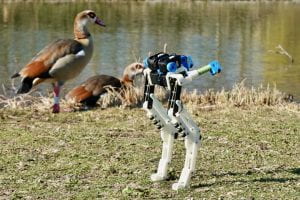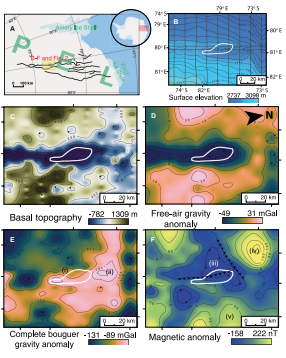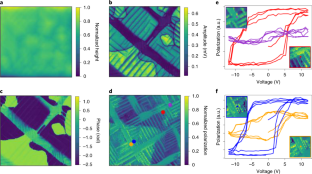モニカ・デイリーが鳥の地上運動を研究し、移動に問題がある人を支援する Monica Daley studies avian ground movement to help people with mobility issues
2022-05-09 カリフォルニア大学校アーバイン校(UCI)

The BirdBot prototype Monica Daley helped develop demonstrates principles that could improve the performance of bipedal robots and human prosthetics. Dynamic Locomotion Group at the Max Planck Institute for Intelligent Systems and UCI
Science Robotics誌に掲載された論文の主執筆者として、Daleyは国際研究チームの一員として、鳥をベースにしたロボットで二足歩行ロボット運動への新しいアプローチを実証しています。
<関連情報>
- https://news.uci.edu/2022/05/09/a-birds-leg-view/
- https://www.science.org/doi/10.1126/scirobotics.abg4055
鳥類に着想を得た脚部クラッチにより、最小限の制御でエネルギー効率のよい歩行を実現したBirdBot BirdBot achieves energy-efficient gait with minimal control using avian-inspired leg clutching
ALEXANDER BADRI-SPRÖWITZ, ALBORZ AGHAMALEKI SARVESTANI ,METIN SITTI AND MONICA A. DALEY
Science Robotics Published:16 Mar 2022
DOI: 10.1126/scirobotics.abg4055
Abstract
Designers of legged robots are challenged with creating mechanisms that allow energy-efficient locomotion with robust and minimalistic control. Sources of high energy costs in legged robots include the rapid loading and high forces required to support the robot’s mass during stance and the rapid cycling of the leg’s state between stance and swing phases. Here, we demonstrate an avian-inspired robot leg design, BirdBot, that challenges the reliance on rapid feedback control for joint coordination and replaces active control with intrinsic, mechanical coupling, reminiscent of a self-engaging and disengaging clutch. A spring tendon network rapidly switches the leg’s slack segments into a loadable state at touchdown, distributes load among joints, enables rapid disengagement at toe-off through elastically stored energy, and coordinates swing leg flexion. A bistable joint mediates the spring tendon network’s disengagement at the end of stance, powered by stance phase leg angle progression. We show reduced knee-flexing torque to a 10th of what is required for a nonclutching, parallel-elastic leg design with the same kinematics, whereas spring-based compliance extends the leg in stance phase. These mechanisms enable bipedal locomotion with four robot actuators under feedforward control, with high energy efficiency. The robot offers a physical model demonstration of an avian-inspired, multiarticular elastic coupling mechanism that can achieve self-stable, robust, and economic legged locomotion with simple control and no sensory feedback. The proposed design is scalable, allowing the design of large legged robots. BirdBot demonstrates a mechanism for self-engaging and disengaging parallel elastic legs that are contact-triggered by the foot’s own lever-arm action.



